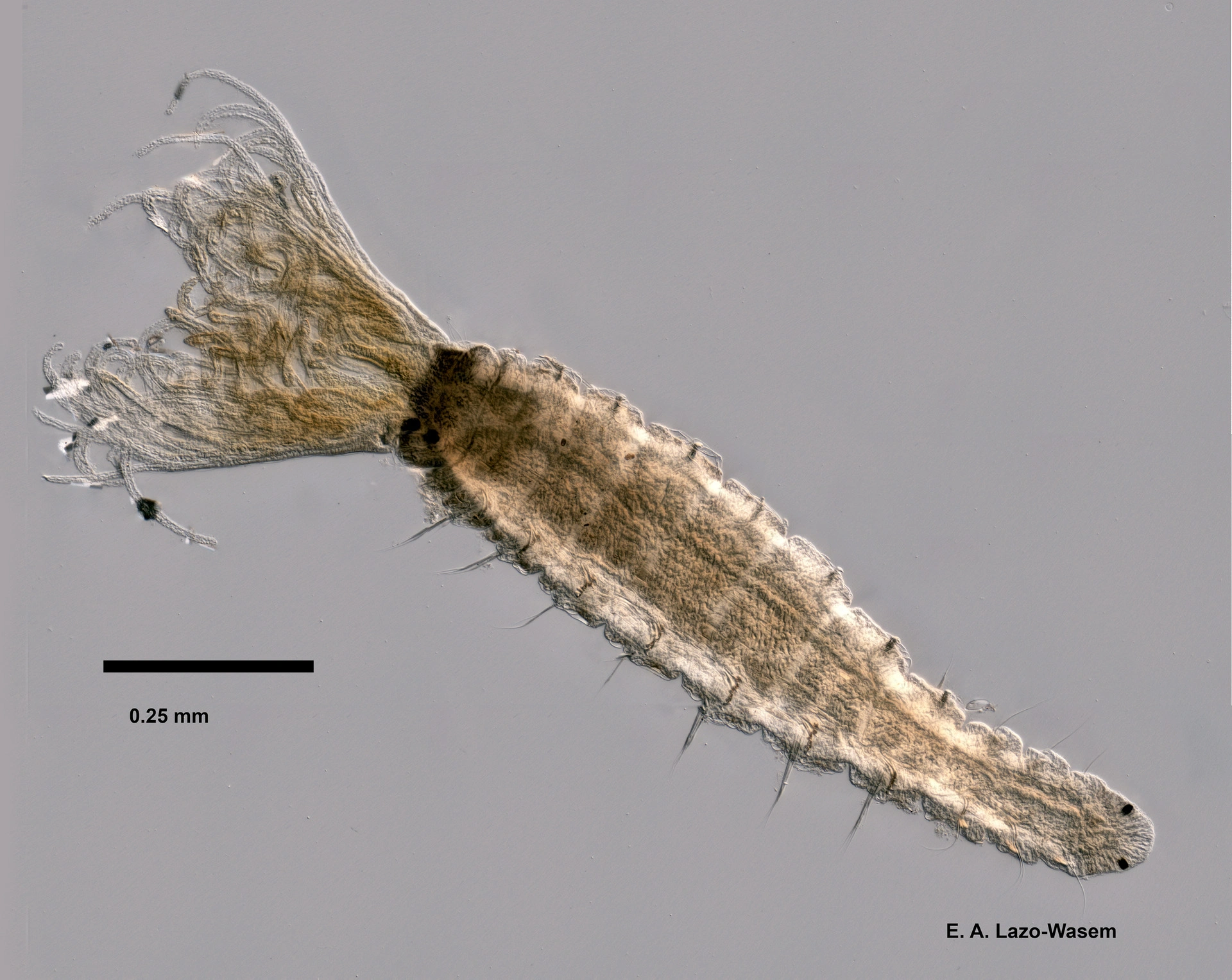Fabricia stellaris
Fabricia stellaris.
This is the only fabriciid reported in Norwegian waters so far. It is often overlooked due to its small size. It is a small tubeworm that inhabits intertidal and shallow subtidal hard bottom environments.
- Innhold
- Measurements
- Characteristics
- Look-alikes
- Biology, ecology and behaviour
- Habitat
- Recommended citation
Measurements
Up to 2.5 mm long, and adults have 11 chaetigers.
Characteristics
Fabricia stellaris is a tubeworm often found outside its tube. It is easy to identify as it is the only fabriciid reported to date in Norwegian waters. It has eight thoracic and three abdominal chaetigers. The radiolar crown bear three pairs of radioles with branching pinnules, all of similar height. The anterior segments and the base of the crown are dark pigmented. Members of this species have one pair of black peristomial eyes and one pair of black pygidial eyes. The thoracic uncini are acicular, with a long and thin handle. The abdominal uncini have rasp-shaped plates and a thickened and flat handle.
Look-alikes
Fabricia stellaris superficially resembles some small sabellids, but the number of chaetigers, 11, and radioles, 3 pairs, together with the chaetal morphology undoubtedly characterizes this unique species. There are some other minute features, such as the internal radiolar structures, that require expertise and a high-quality microscope to be able to recognize, and these are not included here.
Biology, ecology and behaviour
Fabricia stellaris is a small tubeworm that often goes unnoticed. Larvae of F. stellaris are brooded by the female within its tube.
Habitat
The species is broadly distributed in the Northeast Atlantic, mainly at intertidal to shallow subtidal environments. It is generally most common on hard substrates, and sometimes in large abundance.
Recommended citation
Capa M. Fabricia stellaris (Müller, 1774). www.artsdatabanken.no/Pages/313097. Downloaded <year-month-day>.
